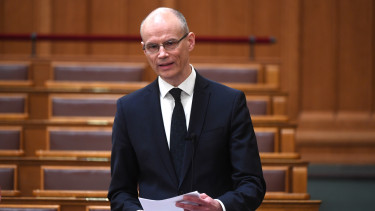Respiratory infections continue to spread in Hungary
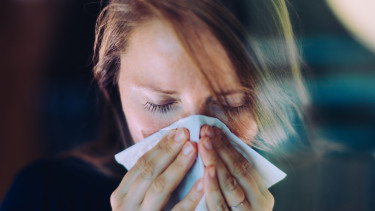
This respiratory season starts worse than in the previous years. The number of people seeking medical help with acute respiratory infection (ARI), including influenza-like illness (ILI) was higher on the 42nd week than on the same week of the previous three years.
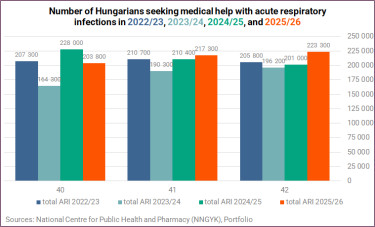
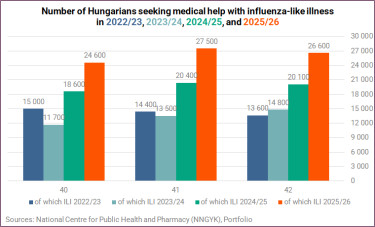
The share of ILI in ARI was 11.9%, also higher than in the previous three years, although it marks a drop from a week ago (12.7%).
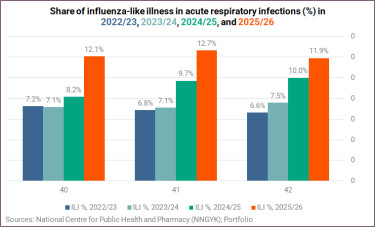
With regard to the number of ARI patients per 100,000 inhabitants, we're worse off than in either of the previous three respiratory seasons.
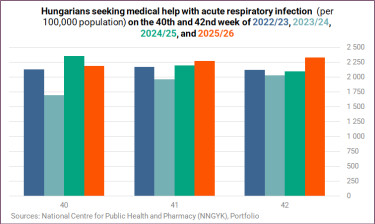
The number of patients with ILI per 100,000 people greatly exceeds the comparative figures of the previous three seasons.
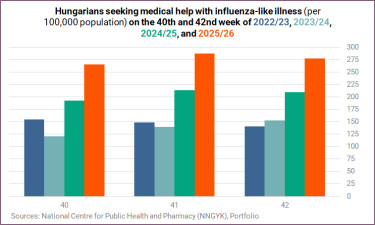
The Covid-19 positivity rate came in at 20.7% when considering all positive tests (32) of the samples submitted by sentinel GPs (198) and at 22.4% when calculating with all positive tests (50) in all of the samples (i.e. those submitted by sentinel hospitals and also traditional diagnostic samples, 224 in total).
The coronavirus positivity rate was higher in 2024/25 (23.1%) and in 2023/24 (25.9%).
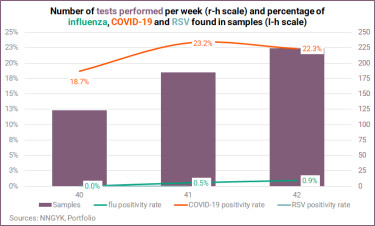
Read our articles about the importance of vaccination below:
The NNGYK has today warned about the importance of vaccinating against the flu, but it reported about 49,000 more free doses administered in the 2024/25 season than a month ago. We have enquired about this discrepancy and will issue an update as soon as we get a response.
Hospitalisations
There were 77 people in hospital with severe acute respiratory infection (SARI), of whom 37 tested positive for COVID-19 (48.1%), which compares with 46.9% in 2024/25 and 65.3% in 2023/24, when hospitals admitted a lot more SARI patients on the 42nd week, 196 and 170, respectively,
Five of the 77 patients needed intensive of subintensive care, a ratio of 6.5%, which compares with 13 in the same week of 2024 and 8 in 2023 (with ratios of 6.6% and 4.7%, respectively).
More than two-thirds of people admitted to hospital with a coronavirus infection were over 60 years old (25 in total), and almost 56% of SARI patients were in this age group (43 in total). A bit less than a quarter of SARI patients were under two years old (18 in total).
The NNGYK also had some key data published since the official end of the previous respiratory season on the 20th week, which show a general increase in the number of hospitalsed SARI patients since the 35th week and a drop on the 42nd week. We also find that SARS-CoV-2 is the main reason behind hospitalisations. We should see further moderation on the 43rd week but only due to a short week caused by a national holiday on 23 October and an extra holiday on Friday.
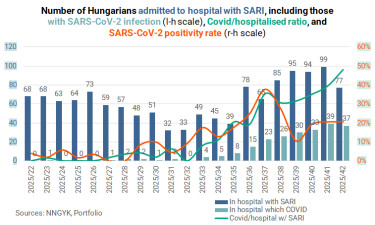
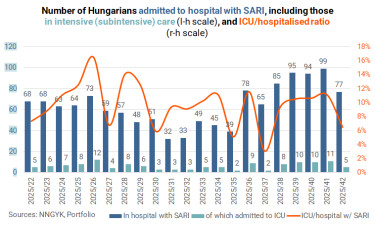
More than 44% (about 89,500) of people seeking medical help with an acute respiratory infection (ARI) in week 42 were children aged up to 14. More than a quarter (51,700) were aged 15–34.
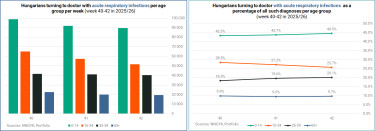
The graphs below show a breakdown of ARI patients by age group for this year and the previous two seasons.
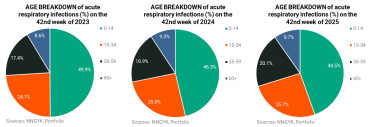
When it comes to ILI, the most affected age group was people aged 15–34, accounting for about 7,000 (34.7%) of all patients with influenza-like illness.
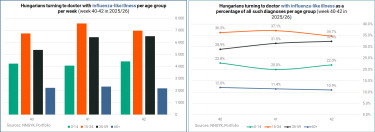
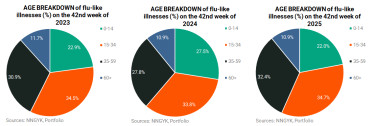
The patterns of the previous years suggest that the ratio of coronavirus infections in hospitalisations should start dropping just about now and get close to 0-10% by the 5th or 6th week of next year. In parallel with this, influenza infections behind hospitalisations should start to pick up before the end of the year or early 2026. And then there's the respiratory syncytial virus (RSV) to consider.
This is how the pathogens 'swapped places' as the main reason behind hospitalisations last year.
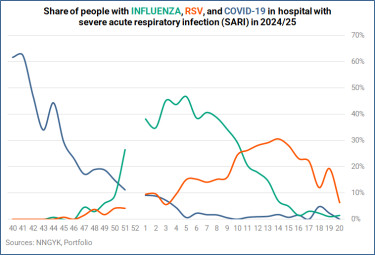
And this is how they changed over the past three respiratory seasons.
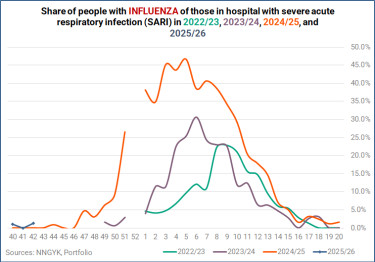
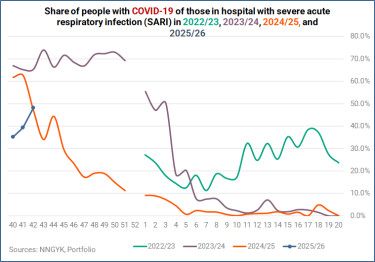
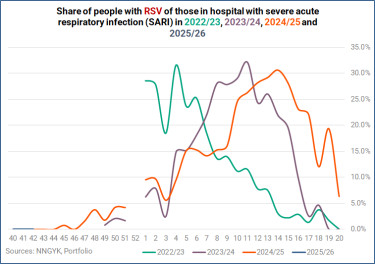
Cover image (for illustration purposes only): Getty Images
